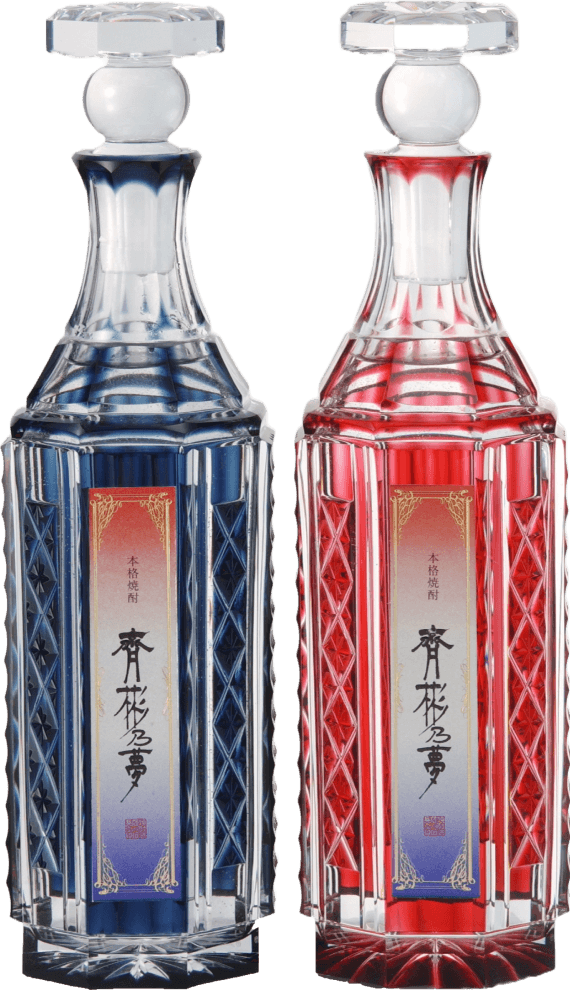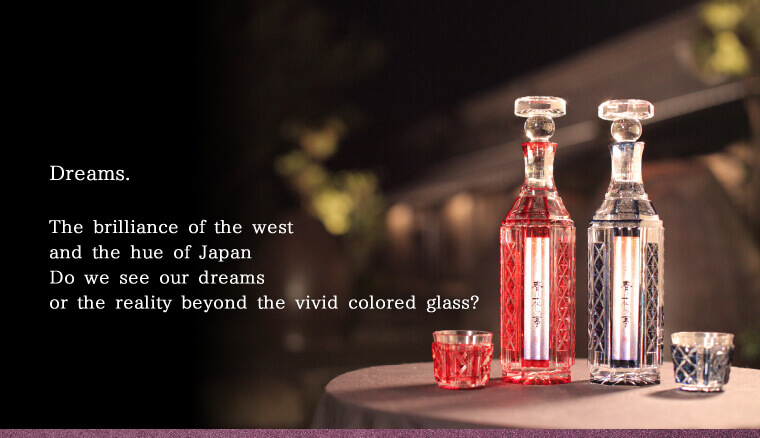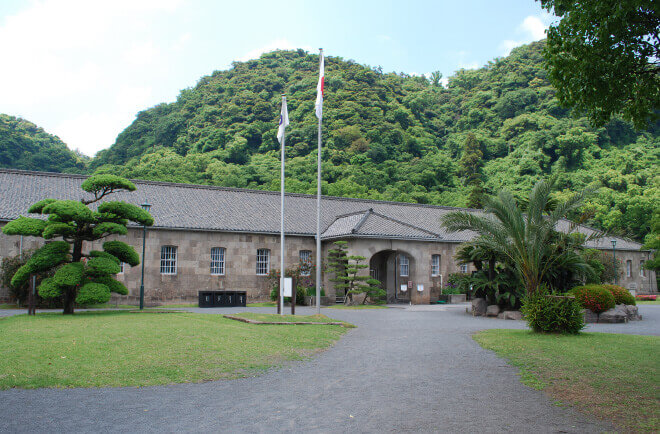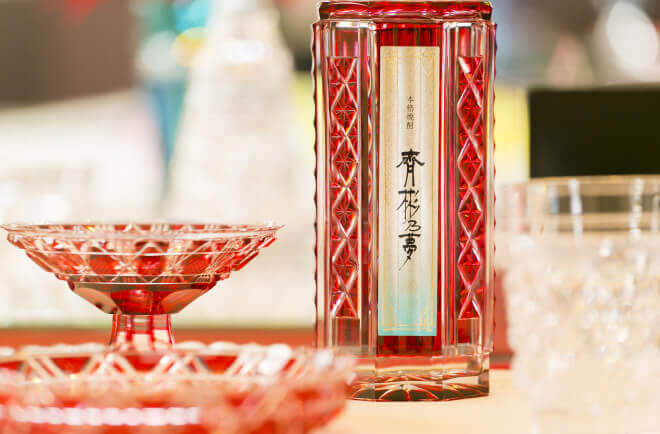Honkaku Shochu Nariakira's Dream

The unrefined Honkaku Imo Shochu made in the traditional method is bottled in gorgeous Satsuma Cut Glass, one of the traditional handicrafts of Kagoshima.
Koganesengan sweet potatoes produced in Kagoshima Prefecture are fermented with the Yellow koji mold used in olden days when Shochu making began.
The unrefined Honkaku Imo Shochu is made in the age-old, traditional method of fermentation in jars followed by wooden barrel distillation.
The mellow and rich flavor deepens as it matures.
The octagon-shaped Satsuma Cut Glass bottle combines a traditional pattern of the days when Shimadzu Nariakira reigned with a touch of modern simplicity.
- Category
- Sweet Potato Honkaku Shochu
- Raw ingredients
- Sweet Potato (Kagoshima Prefecture), Rice Koji (Domestic Rice)
- Koji mold
- Yellow
- Alcohol
- 37%


Foundation of Japan’s Modernization: Shuseikan Project and Satsuma Cut Glass
Shimadzu Nariakira made great efforts into developing modern industries to enable the country to deal on an equal stance with the great powers of the West. He built the industrial complex known as Shuseikan near the sea and developed a wide range of industries such as shipbuilding, cannon production, glass manufacturing and textiles. Satsuma Cut Glass was part of these efforts and the glass manufacturing techniques were intended for building warships. Nariakira is known for having had progressive ideas, one of which is the use of the alcoholic content of Shochu as a fuel to run factory machines. The goal was to enable the country to compete with the great powers of the West. ‘Nariakira’s Dream’ was launched to celebrate the 150th anniversary of the Shuseikan Project.

Satsuma Cut Glass is the crystallization of Nariakira’s dream
Nariakira attempted to make Japan strong and wealthy and developed Satsuma Cut Glass as an export item. Satsuma Cut Glass is acclaimed as an important milestone in the history of the world’s glasswork. Colored glass is laid over transparent glass and cuttings are incised gently. Unique gradation emerges as incisions reach the layer of transparent glass through the colored glass laid over it. The technique is found nowhere else but in Satsuma. Research on coloring glass created a wide color variation of crimson, indigo, purple and green. Among them, Crimson Satsuma Glass was highly reputed the world over.
Foundation of Japan’s Modernization: Shuseikan Project and Satsuma Cut Glass
Shimadzu Nariakira made great efforts into developing modern industries to enable the country to deal on an equal stance with the great powers of the West. He built the industrial complex known as Shuseikan near the sea and developed a wide range of industries such as shipbuilding, cannon production, glass manufacturing and textiles. Satsuma Cut Glass was part of these efforts and the glass manufacturing techniques were intended for building warships. Nariakira is known for having had progressive ideas, one of which is the use of the alcoholic content of Shochu as a fuel to run factory machines. The goal was to enable the country to compete with the great powers of the West. ‘Nariakira’s Dream’ was launched to celebrate the 150th anniversary of the Shuseikan Project.
Satsuma Cut Glass is the crystallization of Nariakira’s dream
Nariakira attempted to make Japan strong and wealthy and developed Satsuma Cut Glass as an export item. Satsuma Cut Glass is acclaimed as an important milestone in the history of the world’s glasswork. Colored glass is laid over transparent glass and cuttings are incised gently. Unique gradation emerges as incisions reach the layer of transparent glass through the colored glass laid over it. The technique is found nowhere else but in Satsuma. Research on coloring glass created a wide color variation of crimson, indigo, purple and green. Among them, Crimson Satsuma Glass was highly reputed the world over.


Foundation of Japan’s Modernization: Shuseikan Project and Satsuma Cut Glass
Shimadzu Nariakira made great efforts into developing modern industries to enable the country to deal on an equal stance with the great powers of the West. He built the industrial complex known as Shuseikan near the sea and developed a wide range of industries such as shipbuilding, cannon production, glass manufacturing and textiles. Satsuma Cut Glass was part of these efforts and the glass manufacturing techniques were intended for building warships. Nariakira is known for having had progressive ideas, one of which is the use of the alcoholic content of Shochu as a fuel to run factory machines. The goal was to enable the country to compete with the great powers of the West. ‘Nariakira’s Dream’ was launched to celebrate the 150th anniversary of the Shuseikan Project.

Satsuma Cut Glass is the crystallization of Nariakira’s dream
Nariakira attempted to make Japan strong and wealthy and developed Satsuma Cut Glass as an export item. Satsuma Cut Glass is acclaimed as an important milestone in the history of the world’s glasswork. Colored glass is laid over transparent glass and cuttings are incised gently. Unique gradation emerges as incisions reach the layer of transparent glass through the colored glass laid over it. The technique is found nowhere else but in Satsuma. Research on coloring glass created a wide color variation of crimson, indigo, purple and green. Among them, Crimson Satsuma Glass was highly reputed the world over.

